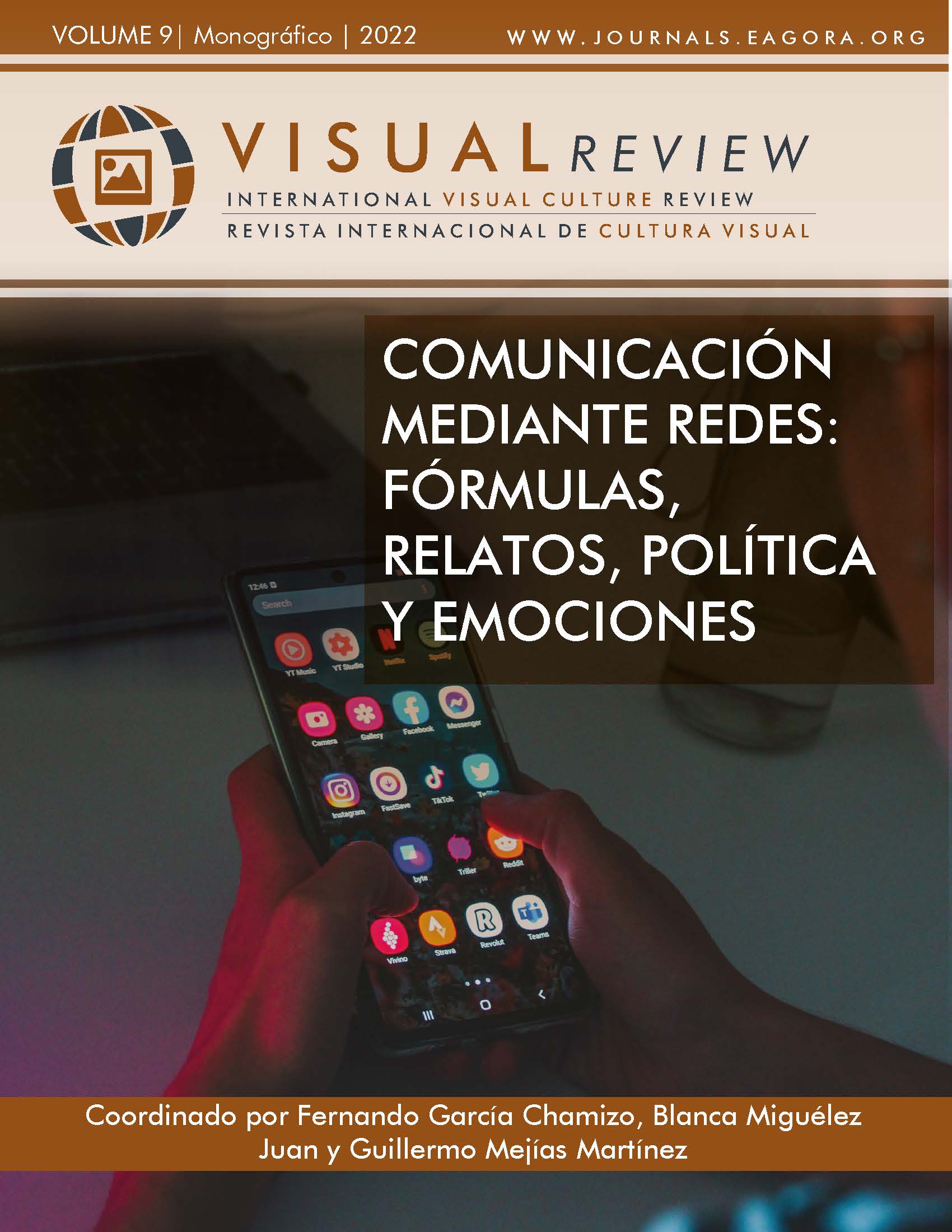Impact of Twitter on the public opinion building process
Covid 19 pandemic between March and December 2020 in Ecuador
DOI:
https://doi.org/10.37467/revvisual.v9.3518Keywords:
Social Networks, Crisis Communication, Public Opinion, Communication and Health, EcuadorAbstract
The COVID-19 pandemic and its aftermath of deaths and illnesses gave rise in Ecuador to a conflict between the official versions published about the tragedy and those that were also made known by alternative sources, through the social network Twitter and others. The crisis caused by serious problems in the field of health revealed the important role of communication media arising from modern technologies, enabling citizen participation in the construction of media reality. Qualitative and quantitative research techniques yielded results that show how society receives contradictory information about the same facts.
Downloads
Global Statistics ℹ️
|
596
Views
|
433
Downloads
|
|
1029
Total
|
|
References
Aguado, J. (2015) Del periodismo ciudadano al influencer Los medios de comunicación dejan de ser referentes en favor de internautas anónimos
Albornoz, M., y Rosales, R. (2012). Periodismo ecuatoriano y Twitter. El caso del 30-S ecuatoriano. Revista Versión Estudios de Comunicación Política, Nº 30, 91-101.
Alonso, J. (2006: “El público es el nuevo periodista”, en ABC de las Artes y de las Letras, 776.
Boladeras Cucurella, M. (2001). La opinión pública en Habermas. En: Análisis (26). Barcelona: Universitat de Barcelona-Facultat de Filosofia, pp. 51-70.
Bryant, J., & Miron, D. (2006). Theory and Research in Mass Communication. Journal of Communication, 54, 662-704.https://doi.org/10.1111/j.1460-2466.2004.tb02650.x DOI: https://doi.org/10.1111/j.1460-2466.2004.tb02650.x
Camps, S. (1999). Periodismo sobre catástrofes. Buenos Aires: Ediciones Paulinas.
Casini, J. (2008) Periodismo 3.0: el ciudadano como periodista, Oficios Terrestres ISSN: 1853-3248 Páginas: 110-123 http://sedici.unlp.edu.ar/handle/
Castells, M. (2009) Comunicación y Poder, Madrid, Alianza Editorial,
Diario El Comercio. (2020). Guayas cierra abril del 2020 con más muertes que en 4 meses del 2019; el contexto del covid-19 en Ecuador. El Comercio.
https://www.elcomercio.com/tendencias/sociedad/record-muertes-guayas- coronavirus-ecuador.html
Escobar, M. (2018) Periodismo de calidad en la era de la posverdad. Caso Donald Trump.
Trabajo Fin de Grado, Universidad de Sevilla.
Espinoza, C. (2014). Twitter en Ecuador ya sobrepasa la cifra del millón de usuarios. Cobertura digital. 1 de abril. Disponible en http://www.coberturadigital. com/2014/04/01/twitter-en-ecuador-sobrepasa-la-cifra-del-millon-de-usuarios.
Grossi, (2007) Grossi, G. (2007). La opinión pública: Teoría del campo demoscópico. Madrid, España: Centro de Investigaciones Sociológicas.
Habermas, J. (2006) Historia y crítica de la opinión pública: la transformación estructural de la vida pública, Barcelona, Gustavo Gili).
Jara, M. (2022, marzo 14). Lección que mortal crisis dejó en Guayaquil: Responder de forma más ágil. El Comercio. https://www.elcomercio.com/
Mendizábal Rodrigo, I. (2013). Opinión pública 2.0 en el entorno de twitter respecto al proyecto de Ley Orgánica de Comunicación en el Ecuador. Quito: Universidad Andina Simón Bolívar.
Meso Ayerdi, K., (2005) “Periodismo ciudadano: voces paralelas a la profesión periodística”, en Revista Latinoamericana de Comunicación CHASQUI, 90. Quito, Centro Internacional de Estudios Superiores de Comunicación para América Latina, pp. 4-15.
Orihuela, J. L. (2005). Los medios de la gente. Razón y Palabra, 10 (46).
Rivera D. y Rodríguez C. (2016) Periodismo ciudadano a través de Twitter. Caso de estudio terremoto de Ecuador del 16 de abril de 2016/ Revista de Comunicación 15, 2016)
Salazar, G., y Punin, M. (2021) Discurso y Poder en Euador. Análisis del discurso de los presidentes Rafael Correa y Lenin Moreno, Global Media, Veracruz, Mexico.
Van Dijk, T. (2016). Análisis Crítico del Discurso. Revista Austral de Ciencias Sociales, 203- 222. DOI: https://doi.org/10.4206/rev.austral.cienc.soc.2016.n30-10
Van Dijk, T. A. (2000). “El estudio del discurso”, en El discurso como estructura y proceso Barcelona: Gedisa, 21-65.
Downloads
Published
How to Cite
Issue
Section
License
Those authors who publish in this journal accept the following terms:
-
Authors retain copyright.
-
Authors transfer to the journal the right of first publication. The journal also owns the publishing rights.
-
All published contents are governed by an Attribution-NoDerivatives 4.0 International License.
Access the informative version and legal text of the license. By virtue of this, third parties are allowed to use what is published as long as they mention the authorship of the work and the first publication in this journal. If you transform the material, you may not distribute the modified work. -
Authors may make other independent and additional contractual arrangements for non-exclusive distribution of the version of the article published in this journal (e.g., inclusion in an institutional repository or publication in a book) as long as they clearly indicate that the work was first published in this journal.
- Authors are allowed and recommended to publish their work on the Internet (for example on institutional and personal websites), following the publication of, and referencing the journal, as this could lead to constructive exchanges and a more extensive and quick circulation of published works (see The Effect of Open Access).













